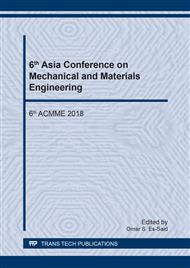p.181
p.189
p.194
p.200
p.206
p.212
p.217
p.222
p.227
Crumb Rubber Modified Asphalt: A Laboratory Investigation Based on Australian and Thailand Perspectives
Abstract:
This laboratory-based study investigated the performance characteristics of wet process crumb rubber modified asphalt (CRMA) with crumb rubber proportions between 0% and 20% by mass of the binder. This was to assess the viability of CRMA for use in countries where CRMA is not widely utilized as Australia and Thailand and primarily involved the resilient and dynamic modulus characteristics, which indicated that CRMA pavement has both positive and negative attributes. The results show that CRMA characterizes a reduced stiffness for high frequency loading, but with a greater elastic range.
Info:
Periodical:
Pages:
206-211
Citation:
Online since:
October 2018
Authors:
Price:
Сopyright:
© 2018 Trans Tech Publications Ltd. All Rights Reserved
Share:
Citation:


